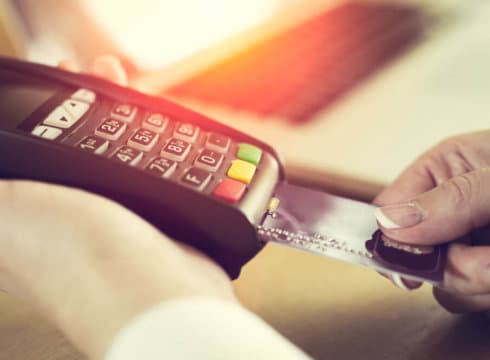The Move To Bear MDR Comes As Government Looks To Boost Digital Payments In The Country
Inc42 Daily Brief
Stay Ahead With Daily News & Analysis on India’s Tech & Startup Economy
In order to encourage small shops to accept digital payments, the government has decided to bear the charges merchants pay to banks aka the merchant discount rate (MDR), on purchases of up to $31(INR 2,000) using a debit card, BHIM or Aadhaar.
Announcing the decision taken at the Cabinet meeting last week, IT minister Ravi Shankar Prasad stated that the government was trying to accelerate digital payment in the country. He added that a committee of secretaries had been set up to ensure that there was no misuse of the subsidy and that benefits are passed on to traders and customers.
Every time a card is swiped, a merchant pays a fee to the bank. This fee called the merchant discount rate (MDR) is deducted by the bank while crediting the sale proceeds to the merchant’s account. Last week the Reserve Bank of India had announced a revised MDR of 0.9% for large merchants and 0.4% for those with a turnover of below $31,322 (INR 20 Lakh) per year. While the charges for debit cards have been waived, payments by credit card will continue to attract MDR. The subsidy will be available for a period of two years starting from January 1, 2018.
Cap On MDR: Another Move By Government To Push Digital Payments
Given that the average debit transaction in India is below $23.49 (INR 1,500), accepting debit cards will become almost as cheap as accepting cash for small merchants. Thus the move will help smaller merchants push digital payments as they largely use debit cards. Credit cards are largely used for payments in big retail outlets.
Ramki Gaddipati, Co-founder and CTO, Zeta, a digital employee benefits solutions provider stated, “The government’s decision to reimburse the MDR to the banks on digital transactions up to INR 2000 is a welcome move. This step will encourage a very large population of merchants, who deal with petty cash for smaller transactions on a daily basis, to move to digital payments. Smaller merchants, who are usually the first and most reached out place for daily needs, as well as the general public, will find it attractive to adopt digital payments, which have seen significant growth post demonetization in the country.”
As per Minister Prasad, from April to September 2017, digital transactions using only debit cards stood at $34.25 Bn (INR 2,18,700 Cr). If the trend continues, the total transactions by April 2018 will amount to $68.5 Bn (INR 4,37,400 Cr), posing a 100% increase. He added that the transactions ranging from $15-$31(INR 1000-INR 2000) are in the region of 15-20% of all digital payments. Though the total amount is less, the volume is high and around 65%.
Meanwhile, the Cabinet also approved the amount required for such reimbursements for the next two years. Prasad said provision of $164.4 Mn (INR 1,050 Cr) in 2018-19 and $229 Mn (INR 1,462 Cr) in 2019-20 have been made. A committee comprising of the secretary, department of financial services, secretary, ministry of electronics & IT, and CEO, National Payment Corporation of India, will look into the industry cost structure of such transactions which will form the basis to determine the levels of reimbursement
With government bearing MDR on under INR2K digital transactions, it will also reduce the cost of handling cash at small merchant outlets. Also, while charges on payments made by BHIM are lower than debit card charges, they are still to pick up in retail payments as they require both merchant and customer to be well versed in using mobile applications.
MobiKwik founder Bipin Preet Singh concurred that this move was the biggest boost from the government for adoption of digital payment in India.
Poised to reach $500 Bn by 2020 according to a report by Google and Boston Consulting Group, the digital payments segment in India has witnessed a sea change in recent times. As per the report, cashless transactions in the consumer payments segment is expected to double to 40% in the next three years.
Already 81% of existing digital payment users prefer paying online to any other non-cash payment methods. Indian consumers are 90% as likely to use digital payments for both online as well as offline transactions. The government’s drive to increase digital payments by pushing the UPI and BHIM platform has also resulted in increased number of digital payment transactions in the country. After clocking 76.8 Mn transactions in October, the Unified Payments Interface (UPI) hit a record high of 105 Mn transactions last month. With the lowering of MDR charges for debit card transactions under $31(INR 2000), digital payments will further receive a boost at the grass root level.
[The development was reported by TOI]
{{#name}}{{name}}{{/name}}{{^name}}-{{/name}}
{{#description}}{{description}}...{{/description}}{{^description}}-{{/description}}
Note: We at Inc42 take our ethics very seriously. More information about it can be found here.


